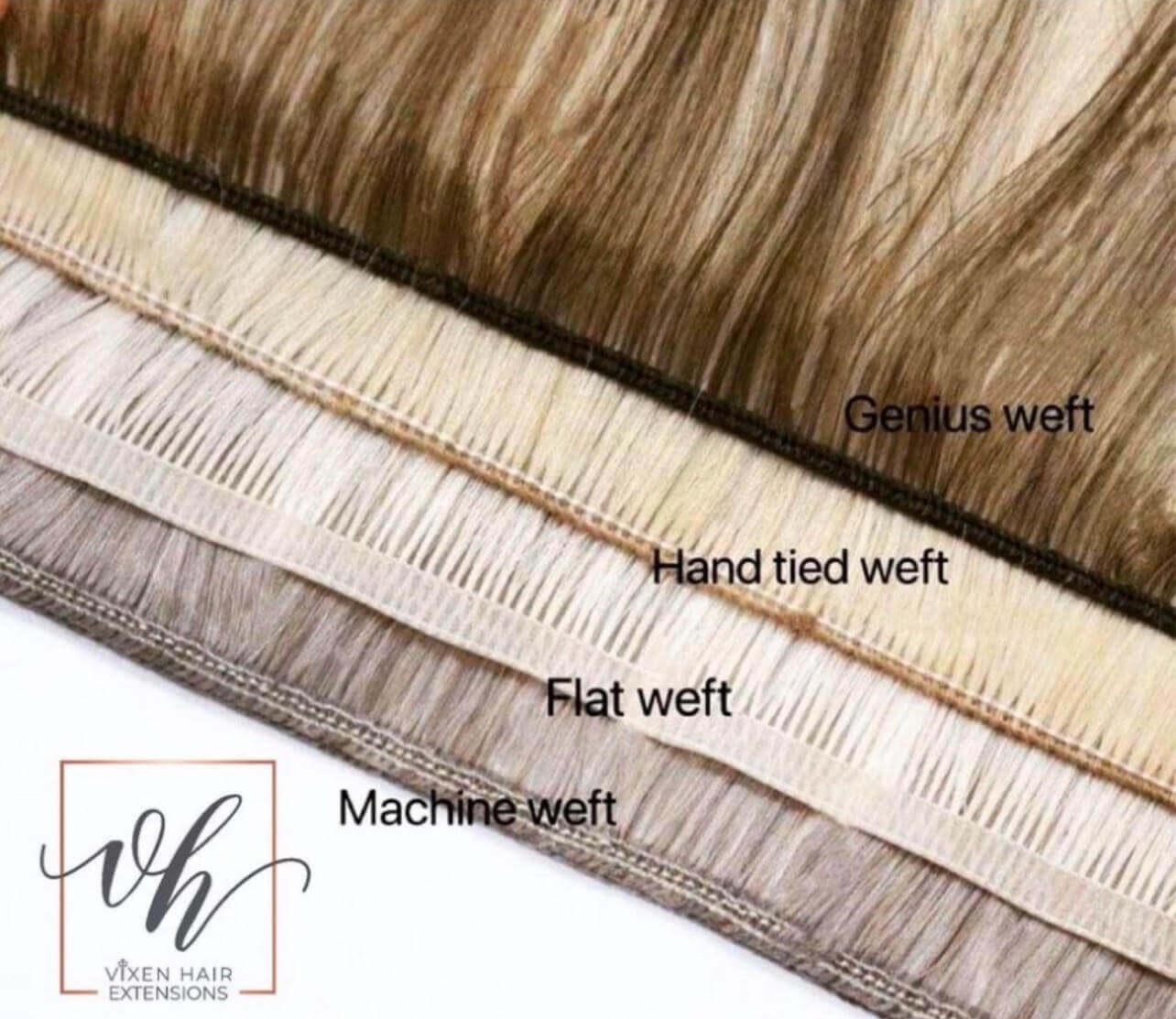


If you've ever wanted to add volume and length to your natural locks but found your hair won't grow past a certain point, hair extensions may be the perfect solution for you. With so many different types of weft extensions available today, it can be tricky finding an extension type that's the best fit for you. Love the weft method? In this post, we'll go over everything you need to know about the 5 different 'weft/weave' types to help you make your choice with confidence.
Machine weft is hair that has been sewn in using an industrial sewing machine. A machine sows in the hair by catching the hair with a needle and thread. A sewing machine requires the weft to be big enough to grip while sewing the hair to it. This makes machine-tied wefts heavier and denser than other types of wefts and can give your hair that extra volume. Machine weft hair extensions are the thickest of these weft types. These extensions are best for ladies with thick hair and a thick root that can support the weight of the hair.
The flat weft is a thin weave that is sewn in by a machine. It is thin, similar to a hand-tied weft, but it can also be customizable and cut like a machine weft. This means that install times take slightly less time than that of a hand-tied install. Since the flat weft is extremely thin and lies extremely close to the scalp, it's comfortable with no return hair or bulking. Flat weft hair extensions are best suited for those with medium to thick density hair.
The PU weft is applied by manually tying hair to the extension seam and then knotting it into place by hand. The PU weft is flat and lightweight which makes it blend naturally into your hair. One of the main differences between a PU weft and a hand-tied weft is that PU wefts can be cut like machine wefts without any fraying. PU weft hair extensions are best suited for all hair types as they are lightweight.
The genius weft has recently grown in popularity as it is known for being a flat, thin, and lightweight weft that is comfortable and has a beautiful natural appearance. A genius weft is light and is one of the most invisible wefts available. Another advantage of the genius weft is that it can be cut without fraying. Genius weft extensions are best suited for ladies with fine hair since they are so thin and light.
The hand-tied weft is applied by manually tying hair to the extension seam and then knotting it in place by hand. With a hand-tied weft, you can expect a very strong but much thinner weft in comparison to a machine weft. With a hand-tied weft, stylists can layer more hand-tied hair without adding extra weight and tension onto the client's scalp. These extensions are the thinnest of these weft types. Hand-tied weft extensions are best suited for fine or fragile hair since they are so small and lightweight.
There are several different types of weft extensions you can consider to help you reach your hair goals. Now that you know everything there is to know about the 5 different weft extensions, you can find the perfect weft to give you beautiful, long, and natural-looking locks.